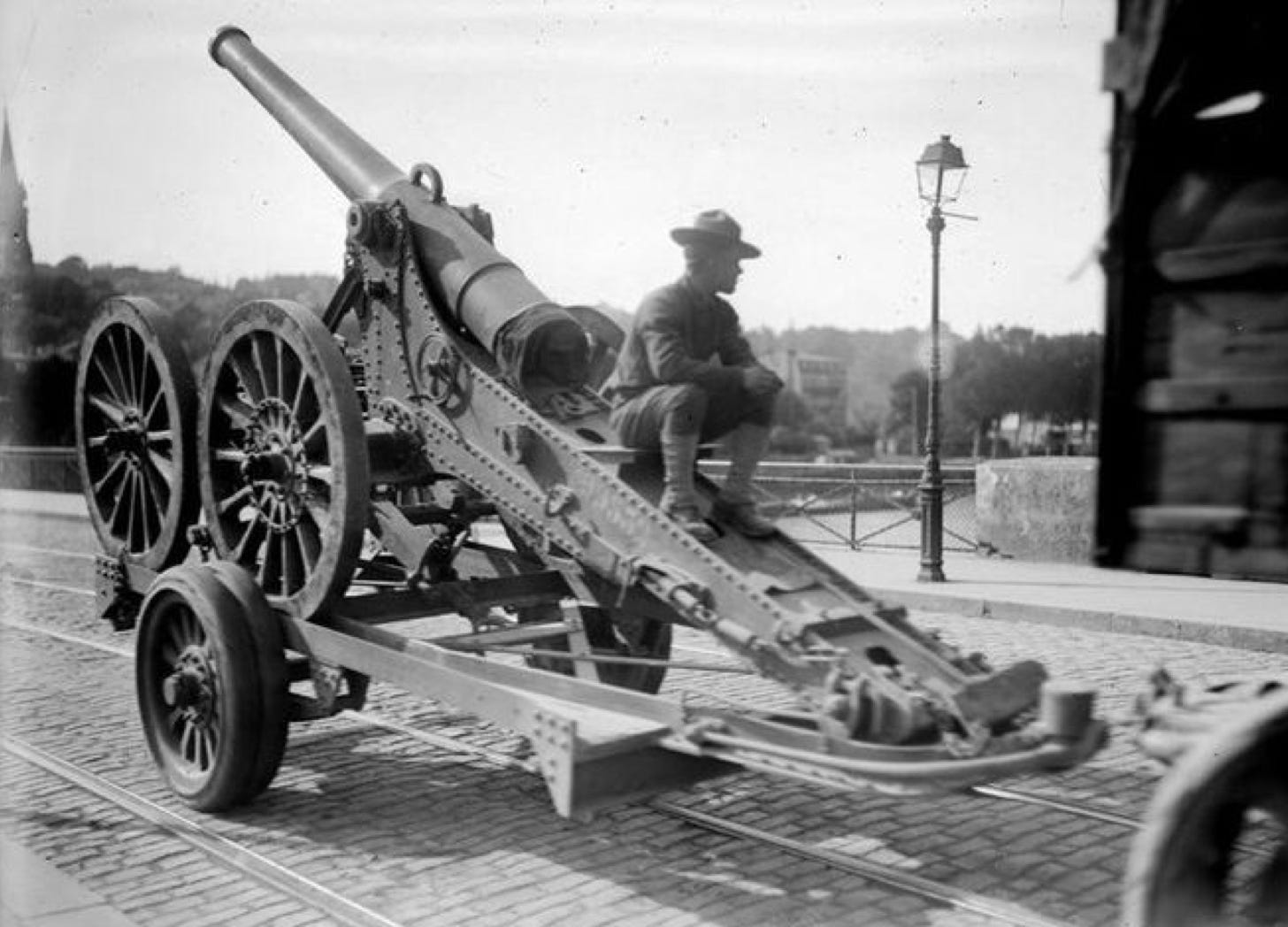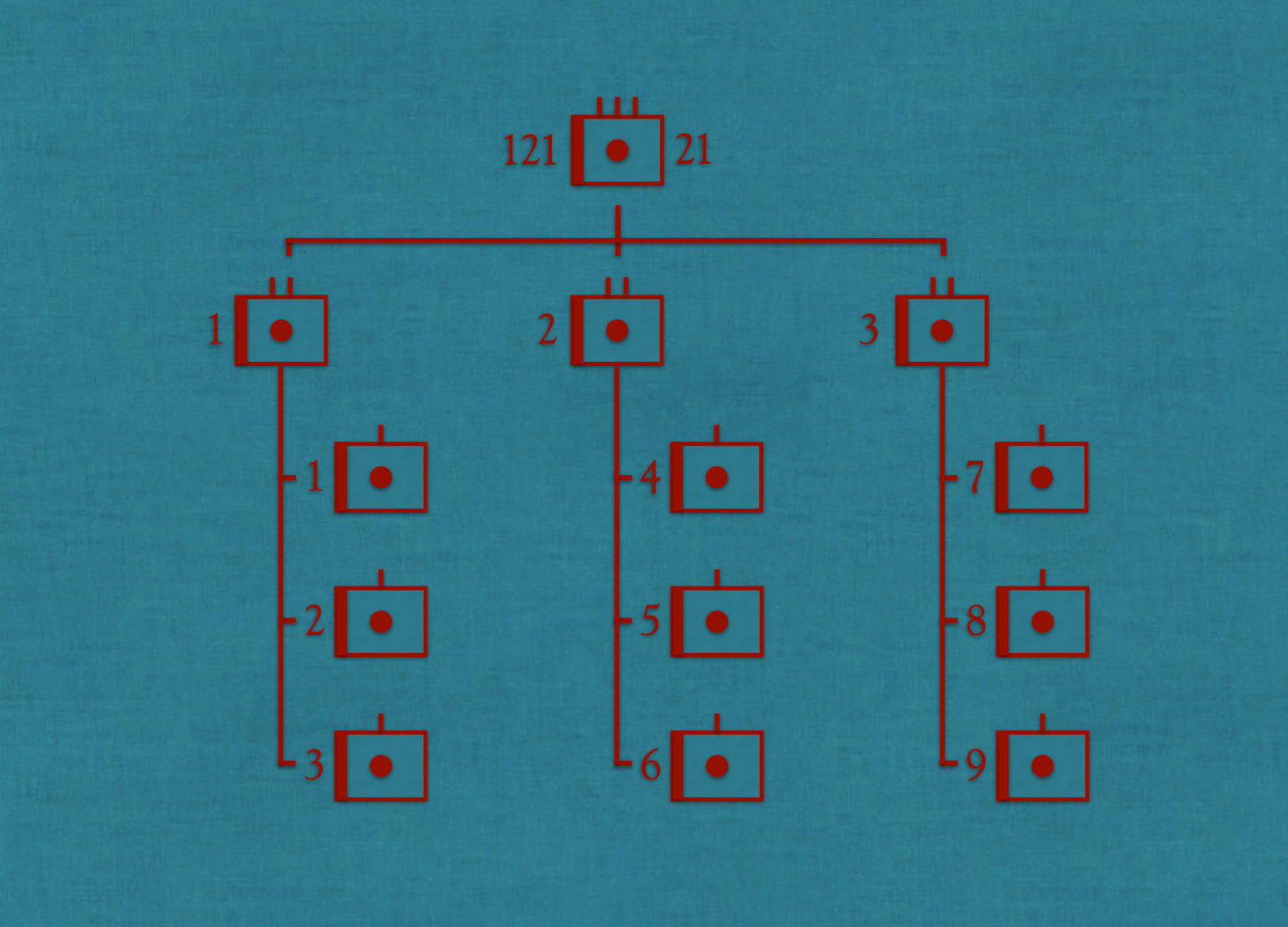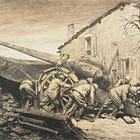The Heavy Artillery of the 21st Army Corps
French Artillery at Belleau Wood
For the first three-quarters of the Battle of Belleau Wood (5 June 1918 through 20 June 1918), the 2nd Infantry Division served as part of the 21st Army Corps [21e Corps d’Armée] of the French Army. As an army corps of the larger sort (with four permanently organized infantry divisions), this formation rated a heavy artillery establishment [artillerie lourde de corps d’armée] of three three-battery groups.
Ideally, one of these groups would be armed with 155mm guns (whether modern, modernized, or obsolescent) and two with up-to-date 105mm guns. However, as 105mm guns were still in short supply in the spring of 1918, one of the groups that rated 105mm guns made do with obsolescent 120mm guns (Model 1878) of the de Bange family.1
At the same time, the group wielding 155mm guns received the most modern of the horse-drawn 155mm guns then serving with the French Army.2 Like the 105mm gun, which had also been designed by the private firm of Schneider and Company, this piece possessed an on-carriage recoil-absorbing system. Thus, all other things being equal, it could be loaded and aimed (and thus fired) more quickly than weapons, such as the 120mm and 155mm guns of the de Bange family, that lacked such devices.
The heavy artillery of the 21st Army Corps formed a single regiment, which bore a number that reminded all concerned of its permanent place in the order of battle of its parent formation. Moreover, while the component groups of the 121st Heavy Artillery Regiment [21e Régiment d’Artillerie Lourde] had been formed separately, the batteries had recently been renumbered in a single series.
Thus, the first three batteries of the 121st Heavy Artillery Regiment, all of which were armed with 105mm guns, belonged to the 1st Group [1ère Groupe]. The 4th, 5th, and 6th Batteries, which employed old 120mm guns, made up the 2nd Group [2e Groupe]. The remaining batteries, equipped with 155mm guns, came together to form the 3rd Group [3e Groupe].
Sources:
War diary [Journal de Marches et Opérations] of the Heavy Artillery of the 21st Army Corps [Artillerie Lourde 21e Corps d’Armée] 18 January 1916-10 November 1919 Archives de Guerre Série 26N, Carton 195, Dossier 11.
Histories of the 121st and 421st Heavy Artillery Regiments [Historiques des 121e et 421e régiments d'artillerie lourde] (1914-1919) (Chaumont: Société nouvelle d'imprimerie champenoise, 1920)
For Further Reading:
Readers wishing more information about the evolution of French artillery over the course of World War I will find much of interest in The French Artillery of the First World War.
The qualifier “horse-drawn” distinguishes the 155mm gun used by the 3rd Group of the 121st Heavy Artillery Regiment from the other 155mm gun introduced by the French Army in 1917, the Model 1917 G.P.F. [Grande-Puissance Filloux]. Named after its inventor, the prolific Colonel Louis Filloux, the latter was a much heavier piece that, thanks to a much longer barrel, could deliver its shells to more distant destinations.







